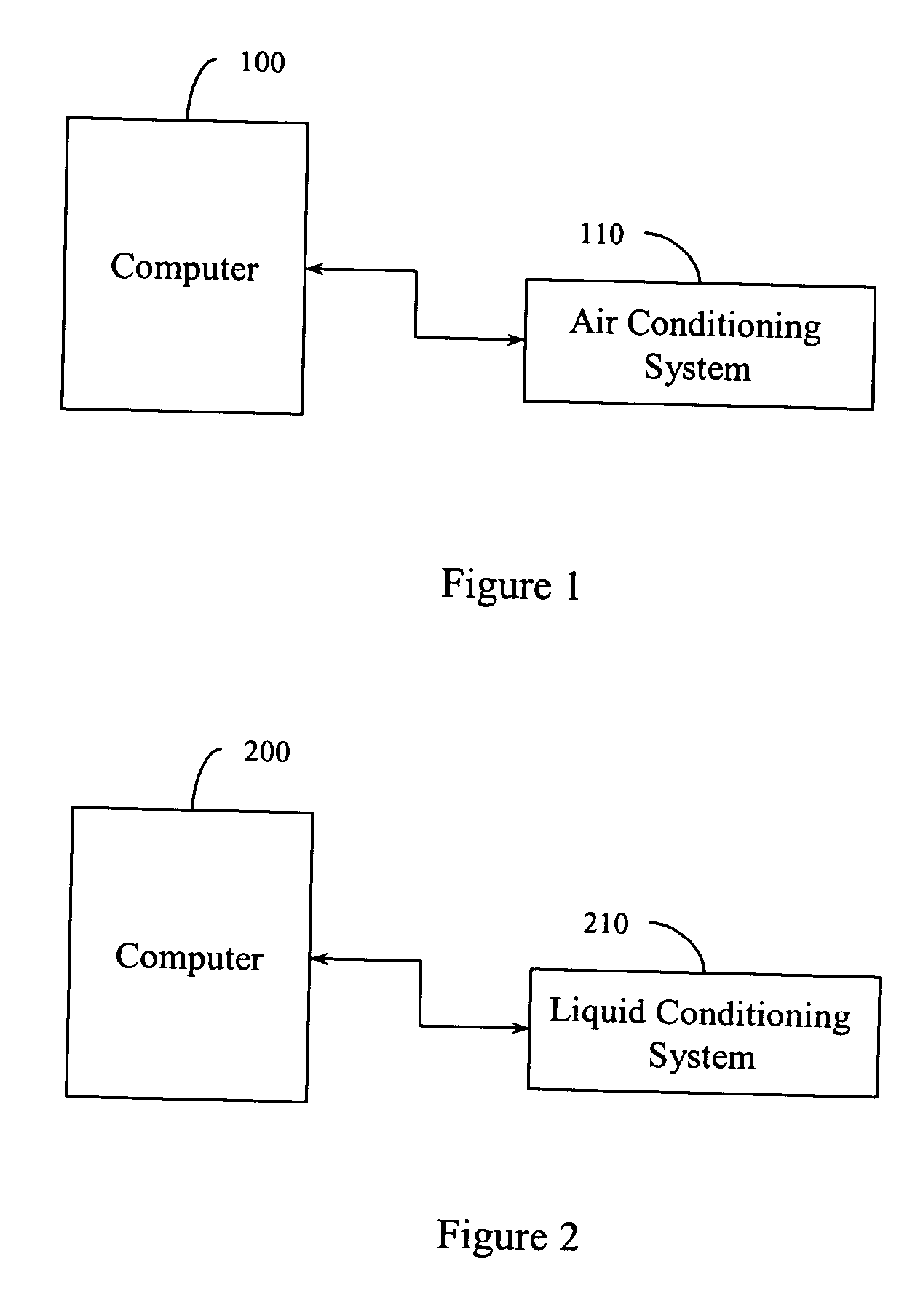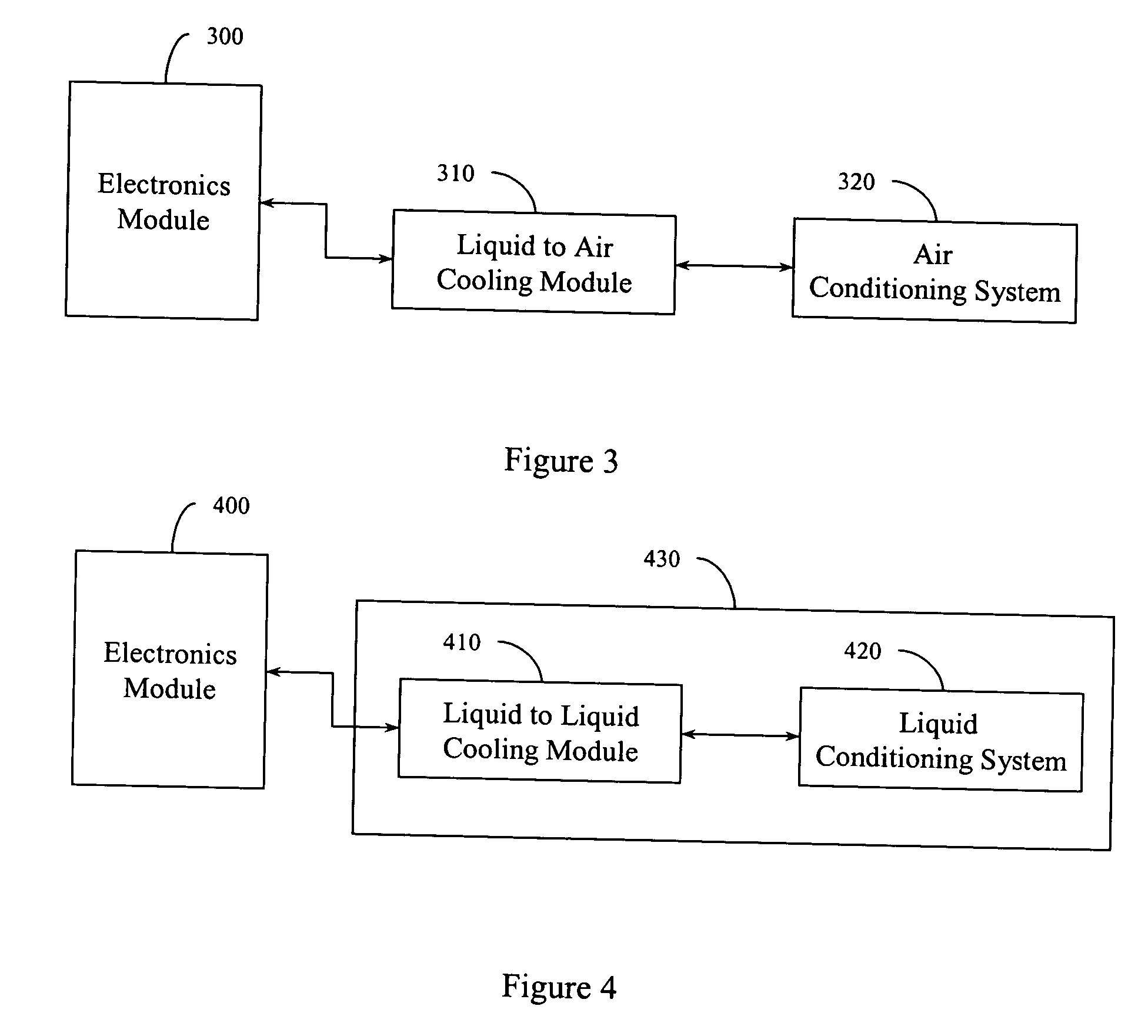Liquid cooled system module
a liquid cooled system and module technology, applied in the field of heat dissipation, can solve the problems of limited system architecture design, limited scaling and interchangeability of installed systems, and restricted migration paths between air cooled and liquid cooled systems
- Summary
- Abstract
- Description
- Claims
- Application Information
AI Technical Summary
Problems solved by technology
Method used
Image
Examples
Embodiment Construction
[0017] Electronics systems (e.g., computers) generate heat. Generally, electronics systems benefit from having this heat dissipated so that the electronics systems do not overheat. The heat may be dissipated by, for example, air, liquid, and so on. The example systems described herein facilitate designing electronic modules without considering whether the destination environment is air conditioned or liquid conditioned. Some electronics systems are located close together (e.g., mounted in racks). In a rack mounted configuration, an air path that had been available to dissipate heat from an electronic module may be blocked when another module is added to the rack. This can limit the size, type, number and so on of modules that can be mounted in a rack. Similarly, a rack located in a facility with a finite air conditioning capacity may not be able to house certain configurations due to the air conditioning limitations.
[0018] Some computer architectures can benefit from having electro...
PUM
 Login to View More
Login to View More Abstract
Description
Claims
Application Information
 Login to View More
Login to View More - R&D
- Intellectual Property
- Life Sciences
- Materials
- Tech Scout
- Unparalleled Data Quality
- Higher Quality Content
- 60% Fewer Hallucinations
Browse by: Latest US Patents, China's latest patents, Technical Efficacy Thesaurus, Application Domain, Technology Topic, Popular Technical Reports.
© 2025 PatSnap. All rights reserved.Legal|Privacy policy|Modern Slavery Act Transparency Statement|Sitemap|About US| Contact US: help@patsnap.com



